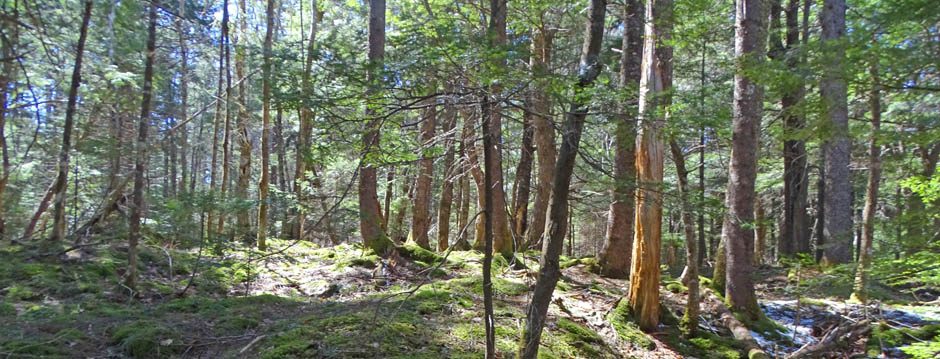The effects of thinning and similar stand treatments on fire behavior in Western forests
Graham et al., 1999. Pacific Northwest Research Station, Gen. Tech. Rep. PNW-GTR-463, 27 pages “… Depending on the forest type and its structure, thinning has both positive and negative impacts on crown fire potential…No single thinning approach can be applied to reduce the risk of wildfires in the multiple forest types of the West. The best general approach for managing wildfire damage seems to be managing tree density and species composition with well-designed silvicultural systems at a landscape scale that includes a mix of thinning, surface fuel treatments, and prescribed fire with proactive treatment in areas with high risk to wildfire.”
Self-thinning forest understoreys reduce wildfire risk, even in a warming climate
Zylstra et al., 2022 in Environmental Research Letters, Volume 17, Number 4 “We found that forests were unlikely to burn for a short ‘young’ period (5–7 years) following fire, very likely to burn as the regrowing understorey became taller and denser (regrowth period), then after a total post-disturbance period of 43–56 years (young + regrowth periods), fire became unlikely and continued to decrease in likelihood (mature period). This trend did not change as the climate warmed, although increases in synoptic variability (mean changes in synoptic systems per season) had a pronounced effect on wildfire likelihood overall. Young forest and regrowth forest became increasingly likely to burn in years of greater synoptic variability and the time taken for forests to mature increased, but in years with the most severe synoptic variability, mature forests were the least likely to burn.” [Studies in Australia)…
Our findings indicate that self-thinning forest understoreys result in long-term reductions in fire risk that are robust even in the face of global warming. Where shrubs are known to self-thin with time since disturbance, management that minimises disturbance and capitalises on the value of mature forests for risk reduction will likely lead to long-term reductions in fire likelihood, countering the climate-driven trend of increased fire impact.
Much research has focused on the short period of reduced flammability that may be achieved through disturbance (young period) and excluded the longer-term dynamics initiated by this disturbance. Ignoring these long-term dynamics can introduce a misleading anthropocentric conceptualization of fire in forests, in which human intervention is needed to minimise the risks of fire. Our findings demonstrate that forests have natural, ecological controls on wildfire that have likely enabled the persistence of fire-sensitive species over geological time (Wardell-Johnson and Coates 1996, Kooyman et al 2020) and continue to operate effectively even in the face of a warming climate.
Here, we introduce the concept of ‘ecological cooperation’ to describe a response to fire that accomodates this reality.”
The importance of natural forest stewardship in adaptation planning in the United States
Faison et al., 2023. in Conservation Science and Biology “…Natural forests (i.e., those protected and largely free from human management) tend to develop greater complexity, carbon storage, and tree diversity over time than forests that are actively managed; and natural forests often become less susceptible to future insect attacks and fire following these disturbances. Natural forest stewardship is therefore a critical and cost effective strategy in forest climate adaptation.”
Impacts of Forest Thinning on Wildland Fire Behavior
By T. Banerjee. 2020. Forests 2020, 11(9), 918; https://doi.org/10.3390/f11090918. “Key message: We have explored the impacts of forest thinning on wildland fire behavior using a process based model. Simulating different degrees of thinning, we found out that forest thinning should be conducted cautiously as there could be a wide range of outcomes depending upon the post-thinning states of fuel availability, fuel connectivity, fuel moisture and micrometeorological features such as wind speed.”
Does increased forest protection correspond to higher fire severityin frequent-fire forests of the western United States?
Bradley et al., 2016 in Ecosphere 7(10) “We found no evidence to support the prevailing forest/fire management hypothesis that higher levels of forest protections are associated with more severe fires based on the RF and linear mixed-effects modeling approaches. On the contrary, using over three decades of fire severity data from relatively frequent-fire pine and mixed-conifer forests throughout the western United States, we found support for the opposite conclusion—burn severity tended to be higher in areas with lower levels of protection status (more intense management), after accounting for topographic and climatic conditions in all three model runs. Thus, we rejected the prevailing forest management view that areas with higher protection levels burn most severely during wildfires.”
